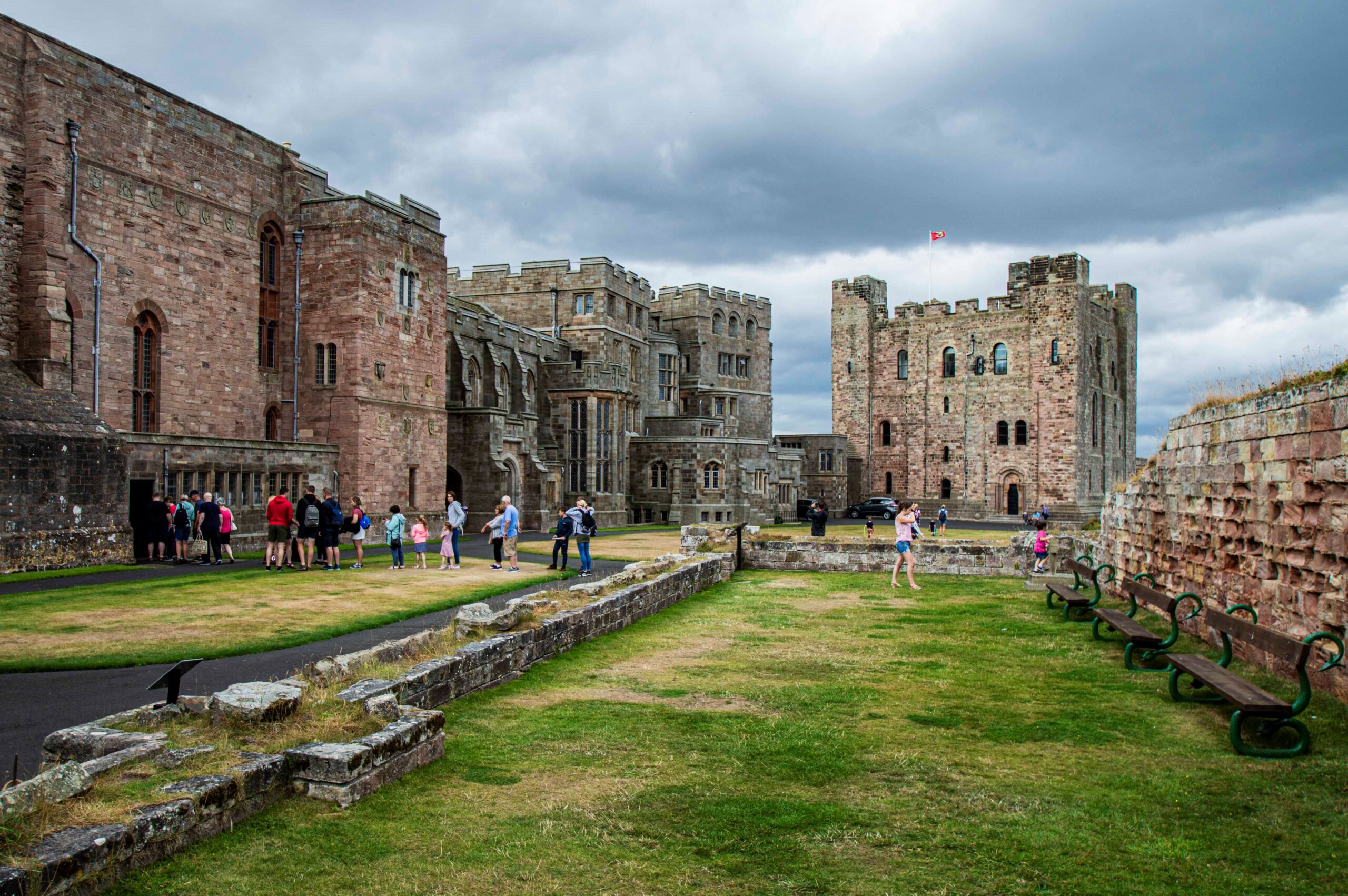Bamburgh Castle

Bamburgh Castle Details
Bamburgh Castle, an impressive medieval castle on the site of an early medieval fortress, restored C19
- Closest To: Bamburgh
- Access: Chargeable Public Access
- Grid Reference: NU183351
Bamburgh Castle is one of the best known castles in England, and was one of the most important castles of Northumberland. Today it has been much restored, and a substantial new residential suite of buildings was erected at the turn of the 19th/20th century, incorporating earlier ruins. It is open to the public as a tourist attraction.
The volcanic outcrop was the location of an important Anglian royal centre by the 6th century, and had previously been used since the Iron Age. It was fortified when the Normans invaded England, and became a royal fortress in 1095. A stone keep and chapel were added in the 12th century, probably for King Henry II, and the courtyard wall was probably in existence by this time as well. A chapel also dates to the 12th century and can be seen within the courtyard. Repairs were carried out in the 13th century, and it was besieged unsuccessfully by the Scots in the 14th. It was defended during the Wars of the Roses but was in ruins by Tudor times, and granted to the Forster family who had been the royal governors of the castle. It was eventually sold to the Bishop of Durham, and the castle was used as a hospital in the 18th century, before being sold to William Armstrong in 1894, who was responsible for the restoration.
The square keep occupies a central;; position between the elongated D-shaped enclosure at the top of the rock, separating the inner Ward from the East, or Middle Ward. It is connected to the restored residential buildings which run along the southern (land-facing) side of the Inner Ward. The chapel stands towards the eastern end of this ward. Projecting towers extend along this southern side, and a lengthy barbican occupies the northern side, with two gatehouses guarding access. A less impressive defensive wall marks the edge of the Inner Ward on the north, and overlooks the barbican area. Additional residential buildings, a gatehouse and at least one tower defended the approach to the Middle Ward from the west, and overlook this lower area, which was defended to a lesser extent, and contained a windmill, and probably operated as a lower status area with stables etc. Archaeological excavations in this area are ongoing.
Bamburgh Castle Research Project
Become a supporter of my work to access a more detailed history